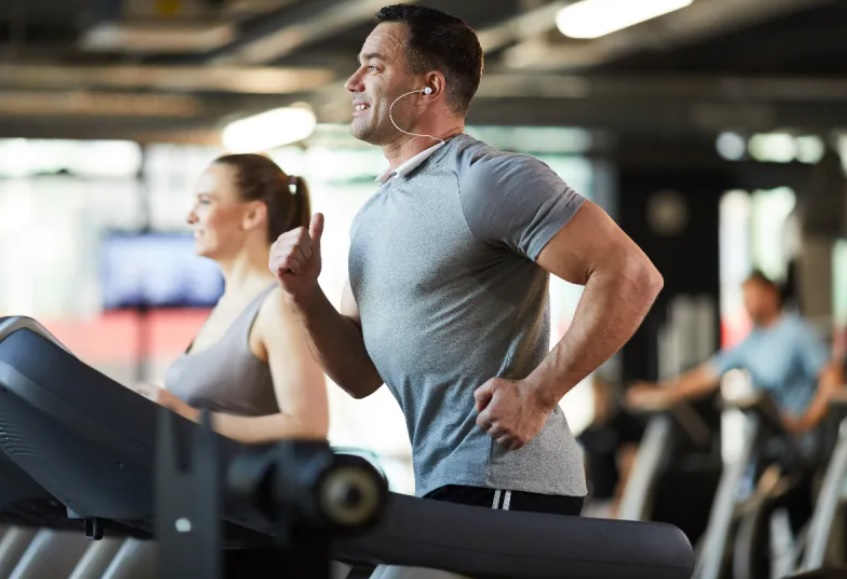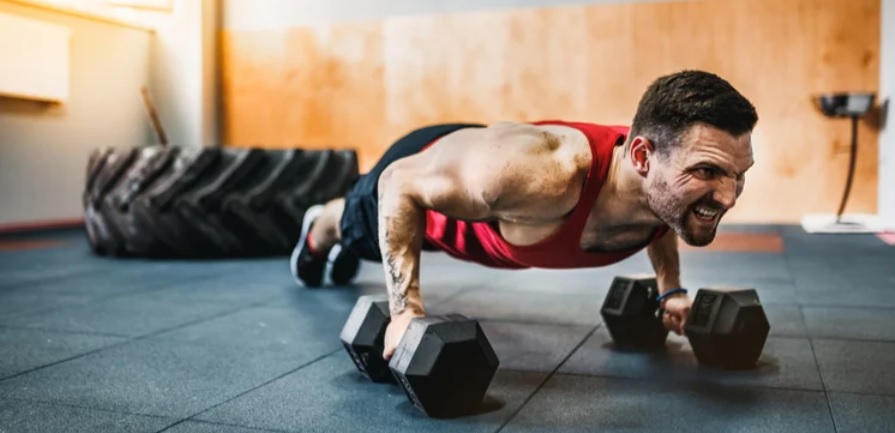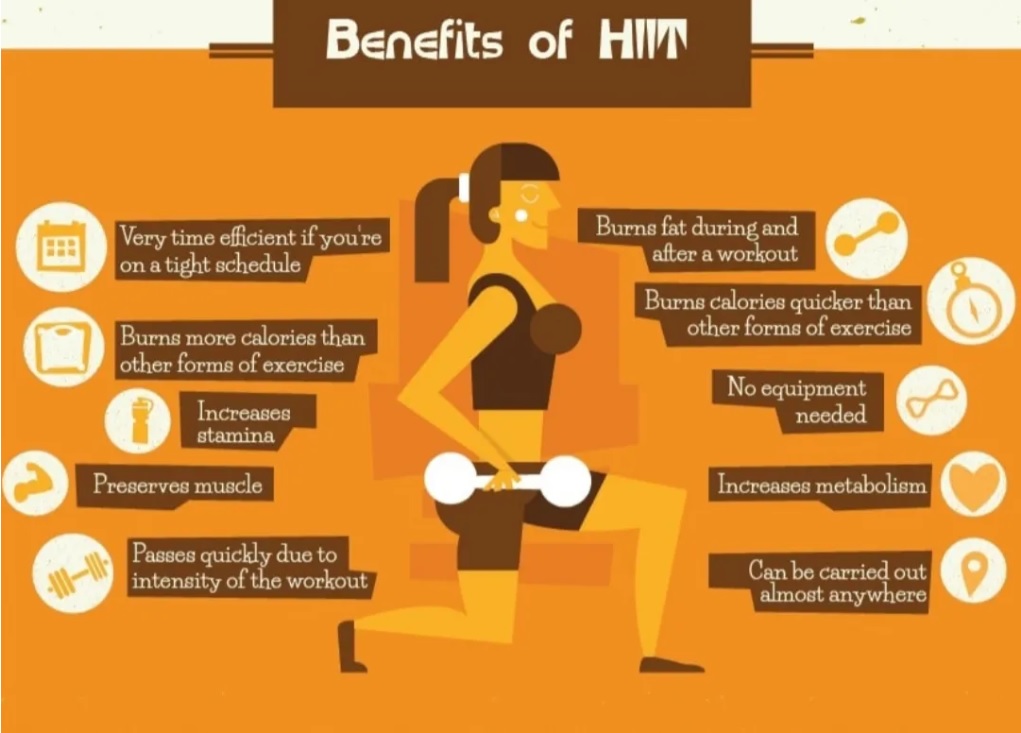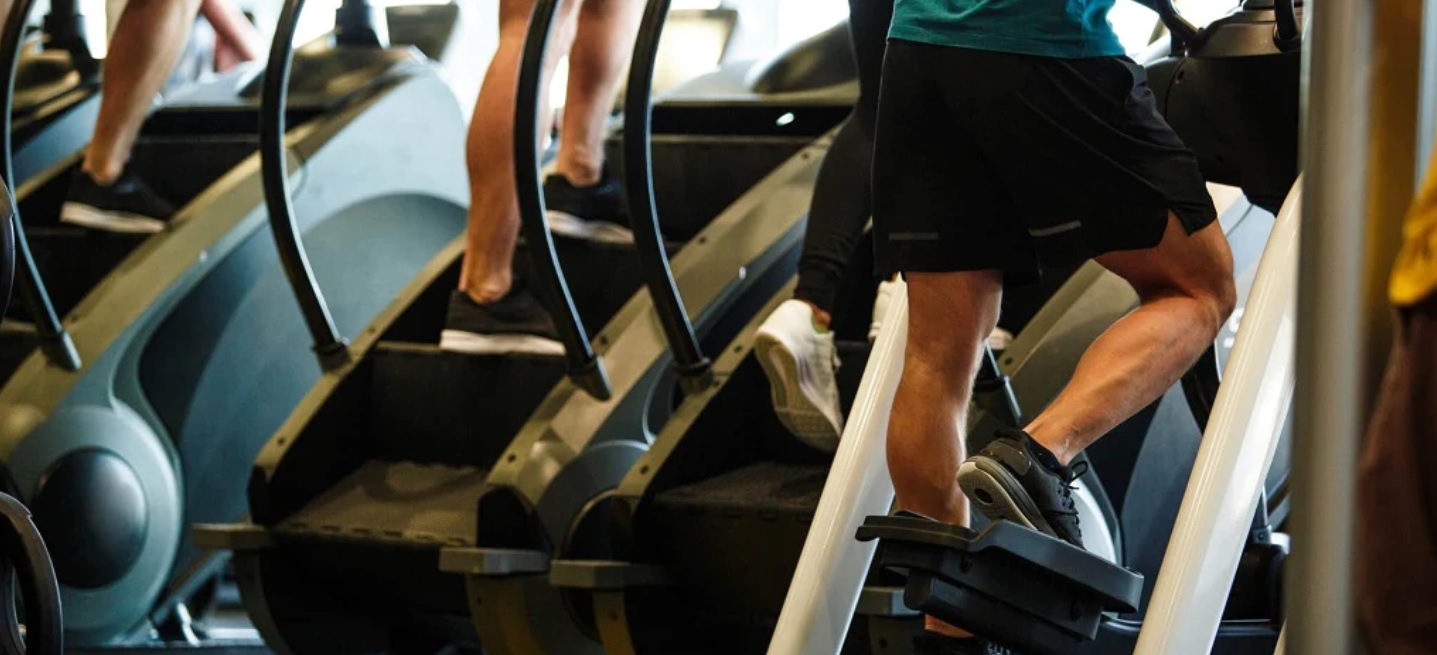The pursuit of an efficient and transforming workout program has never been more important in an era where health and well-being are key. This is your key to accessing a world of workout options that will propel your wellness journey forward. Let us analyze the typical cardio routines and introduce you to the innovative domain of High-Intensity Interval Training (HIIT).
Why Typical Cardio Routines May Be Less Effective For Fat Loss
Traditional aerobic activities have long been thought to be the best way to lose weight. Many individuals resort to aerobic workouts to lose weight, whether it’s jogging, cycling, or utilizing an elliptical machine. While these routines have many health advantages, they may not be as helpful for fat reduction as many people assume.

- Less calorie burning: The inadequate calorie burn of standard cardiovascular workouts is one of the key reasons they may fall short of boosting fat reduction. While they can help you burn calories throughout your workout, your calorie expenditure quickly drops once you finish. In contrast, resistance training of muscles might result in an increased post-workout calorie expenditure owing to muscle repair and development.
- Adaptation plateau: The human body is incredibly adaptive, and it quickly gains efficiency in executing repetitive activities. When you do the same aerobic activity, your body adjusts by burning fewer calories to do the same amount of effort. This phenomenon, known as the “plateau effect,” implies that you’ll need to work harder and a longer time to attain the same fat reduction outcomes over time. A diverse workout regimen, on the other hand, avoids this adaptation and maintains your metabolism
- Muscle Fatigue: Traditional aerobic workouts can cause muscle loss, especially if done excessively and without a balanced strength training component. Muscle loss is unhelpful to fat reduction since it lowers your resting metabolic rate and makes maintaining a calorie deficit more difficult. This is an important factor since losing weight eventually requires burning more calories than you ingest. Resistance exercise, on the other hand, not only protects but also encourages muscle growth, which might increase your ability to burn fat.
- Time Management: Traditional cardio routines are time-consuming for many people, especially if they want to lose a lot of fat. People with hectic schedules may find it difficult to devote hours to the treadmill or elliptical. Long-duration cardio workouts can also cause overuse injuries and exhaustion, which reduces commitment to the fitness plan.
- Ignoring Diet: Another important consideration is that regular aerobic workouts can often result in overcompensation in terms of food consumption. This “reward” mindset might undermine fat loss attempts. For successful fat reduction, a more balanced strategy that combines a good diet with exercise is required.
- Hormonal Influence: Traditional cardio exercises may not have the same hormonal impact as other exercise modalities when it comes to fat reduction. Prolonged, steady-state exercise can raise cortisol levels, a stress hormone linked to muscle breakdown and fat deposition, especially in the abdomen region.
- Traditional aerobic workouts have their place in a well-rounded training regimen and provide several health advantages, but they may not be the most efficient method for fat reduction.
The Effect of HIIT on Fat Loss
HIIT incorporates short bursts of intense activity followed by shorter recuperation intervals and has indisputably multiple benefits for cardiovascular fitness and overall health, it may not be as universally successful for fat reduction as it is sometimes described.

- Overtraining and injury risk: The potential of overtraining and injury is one of the key drawbacks of HIIT for fat reduction. These high-intensity activities put tremendous strain on the joints, muscles, and central nervous system. Individuals who push themselves to their limits during HIIT exercises are more likely to encounter burnout, weariness, and injuries such as sprains, strains, and overuse problems. When injuries occur, people may need to alter or discontinue their workout program making it difficult to maintain a regular fat reduction regimen.
- Time Commitment and Longevity: The success of HIIT is frequently dependent on its short duration and intensity. While this makes it tempting to those with hectic schedules, it may not be viable in the long run for everyone. HIIT may physically and emotionally be exhausting, which can lead to a lack of commitment over time.
- Post-Exercise Calorie Burn is Limited: HIIT is frequently marketed for its capacity to create the “afterburn” effect, in which the body continues to burn calories at an increased rate following exercise due to excess post-exercise oxygen consumption (EPOC). While it is true that HIIT might result in an increase in calorie expenditure following the workout, the extent of this impact is sometimes overestimated. According to research, the increased calorie burn from EPOC is rather little and may not have a substantial influence on total fat reduction when compared to other kinds of exercise.
- Muscle Preservation and Growth are Reduced: When compared to resistance training, HIIT focuses on cardiovascular fitness and calorie burning more than muscle maintenance and development. Maintaining or increasing lean muscle mass is critical for long-term fat loss.
- Overcompensation and Appetite Regulation: HIIT can have unpredictability when it comes to hunger regulation. Some people may experience increased appetite following high-intensity workouts, causing them to overeat. This can cancel out the calorie deficit established during the workout and stymie fat reduction progress.
- Not Appropriate for All Fitness Levels: HIIT is not appropriate for everyone, especially those who are new to fitness, older persons, or those with specific medical concerns. Individuals with preexisting health concerns or physical limitations may be put in danger by the high-intensity nature of HIIT. Furthermore, novices may find HIIT workouts too difficult.
- Carbohydrate-focused: HIIT focuses on brief bursts of high-intensity exercise that predominantly utilize carbohydrates (glycogen) as an immediate energy source. When carbohydrate intake is restricted, the body may have less readily accessible energy for these strenuous activities. This might result in lower workout performance and intensity.
- Intensity and duration: The efficiency of HIIT without carbs may be affected by the nature of the HIIT sessions. Shorter, less intensive workouts may be more maintainable for people on low-carb diets than longer, really high-intensity workouts.
- Individual reactions to Carbohydrate Restriction: Individual reactions to carbohydrate restriction vary greatly. On a low-carb diet, some people can do HIIT well, while others may struggle with energy levels and workout intensity. Genetics, past training experience, and general fitness level all play a part. While it is feasible to practice HIIT without ingesting carbs right beforehand, some people may benefit from consuming carbohydrates strategically throughout their exercises. Consuming a small amount of carbs, for example, before an HIIT activity might offer a rapid energy boost. Post-workout carbohydrate consumption can also help with glycogen replacement and recuperation.
- Balanced Diet: Even when carbs are restricted, it is critical to maintain a balanced diet that delivers the necessary nutrients to promote general health. Carbohydrates are only one component of a well-balanced diet, and removing them totally may result in nutritional deficits if not carefully controlled.

“The Stairmaster Solution: A 5-10 Minute Fat Loss Miracle”
The desire for fat loss has inspired many people to investigate numerous workout techniques, one of which is the StairMaster. This cardio machine has gained appeal among people looking for quick and effective ways to lose excess body fat due to its capacity to give a strong lower body exercise.
The StairMaster works for various muscle groups, mostly in the lower body, making it an effective calorie burner. When taken correctly, it can considerably contribute to fat reduction via a variety of processes.
- Calorie burn is one of the key factors of the StairMaster and encourages fat reduction. The use of resistance and a vertical stepping action results in a high-intensity workout that burns a significant number of calories. When paired with a good diet, this calorie expenditure results in a calorie deficit, which is a crucial necessity for fat reduction.
- Major muscle groups, such as the quadriceps, hamstrings, glutes, and calf muscles, work together to move your body upward against gravity during a StairMaster workout. This muscular activation not only burns calories during the workout, but also adds to a higher post-workout calorie burn. This phenomenon, known as excess post-exercise oxygen consumption (EPOC) or the “afterburn effect,” indicates that your body continues to burn calories after you have finished exercising.
- A greater VO2 max helps you to undertake more intensive exercises and exercise for longer periods. As a result, you may burn more calories every StairMaster session, boosting your fat reduction progress. Furthermore, greater cardiovascular fitness provides a slew of additional health advantages, including a lower chance of heart disease, better mood, and general well-being.
- The interval exercise on the StairMaster makes use of the previously mentioned EPOC effect. Intervals of high intensity raise your heart rate and boost fat burning, while recovery times enable you to regain your breath and prepare for the next strong interval. This dynamic training format increases calorie burn both during and after the workout, making it an effective fat-loss technique.

- While maintaining a calorie deficit is the most important aspect of fat reduction, the StairMaster provides an added benefit by exercising and training the lower body muscles. The constant walking action stimulates the quadriceps, hamstrings, glutes, and calf muscles well. As you drive yourself upward, these muscles not only burn calories but also encourage muscular growth and definition.
- The StairMaster provides a variety of training choices, allowing you to tailor your workouts to your fitness level and goals. You may change the resistance level, select from several programs, and manage the stepping pace. This variation not only makes exercises interesting, but it also allows you to gradually push yourself as you get stronger.
“Gamify: Making Workouts Fun and Engaging”
Making exercises enjoyable and interesting might be a motivational approach to sticking to your fitness plan. Gamification, or the incorporation of game aspects into non-game situations, may make exercise more pleasant and assist you in reaching your fitness objectives. Here are six ideas for making your exercises more fun:
- Set precise fitness objectives for yourself, such as jogging a certain distance, lifting a certain weight, or completing a certain number of sessions in a month.
- Create a rewards system that is linked to your objectives. When you meet a goal, treat yourself to something pleasurable but not detrimental to your fitness quest.
- Use gamification features in fitness applications and wearables. Many applications provide challenges, leaderboards, and achievements, which may turn tracking your progress into a game.
- Through these applications, you may compete with friends or join online fitness communities to add a social and competitive element to your routines.
- During your training, incorporate interval workouts or time-based challenges. Alternate between phases of high-intensity work and rest, for example, to beat your prior time or distance.
- To generate a sense of urgency and competitiveness against yourself, use a timer or stopwatch. With each session, challenge yourself to better your performance.
- Join group fitness programs or workout clubs that provide accountability and companionship. Spinning, dancing, and obstacle course fitness classes may all feel like fun activities.
- Many fitness studios and apps include interactive and group-based challenges in which you may compete against others, creating a fun and encouraging environment.
- Track your progress to keep a visual record of your fitness journey. Use a fitness notebook or an app to track your progress.
Frequently Asked Questions (FAQs)
Isn’t aerobics the most effective technique to burn calories and reduce fat?
While aerobic activity burns calories and helps with fat loss, it may not be the most effective way. Your body adapts to exercise regimens over time, and the calorie burn decreases as your fitness level rises. Furthermore, lengthy exercise sessions might cause muscle loss, which can impede your metabolism.
What is the concept of a “fat-burning zone” in cardio workouts?
The “fat-burning zone” is a notion that suggests that operating at a reduced intensity allows you to burn a larger percentage of fat calories. While low-intensity cardio does burn a larger proportion of fat, high-intensity programs like HIIT burn more overall calories. This implies you may end up burning more.
Do HIIT workouts necessitate a shorter time commitment for fat loss?
While HIIT workouts are shorter in length than typical cardio, they are extremely taxing and should not be done frequently. To lose weight with HIIT, you must also commit to a well-balanced program that includes rest days, strength training, and a well-rounded diet.
How is the Stairmaster superior to other techniques for fat loss?
Because of its substantial calorie burn and lower-body muscular involvement, the Stairmaster can be useful for fat reduction. It increases metabolism by burning calories during exercises and promoting lean muscle growth. Stairmaster workouts save time while providing variation and challenge to avoid plateaus.









